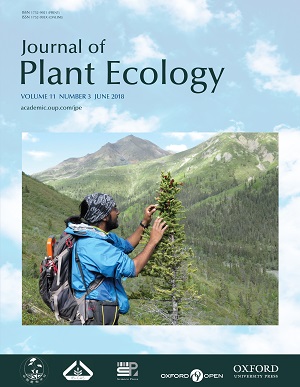Current Issue
-
 Volume 11 Issue 3
Volume 11 Issue 3
Dasvinder Kambo assessing current vs. past year cones on a Picea glauca (white spruce) tree on a north-facing slope in the Kluane Mountain Range of southwest Yukon (61.428°N, 139.485°W). Although the tree is less than 2 m tall, it still has evidence of cone production, which is typical during mast years. Photo taken by Ryan Danby, in summer 2014.
IF: 3.9
CiteScore: 5.7
CiteScore: 5.7
Editors-in-Chief
Yuanhe Yang
Bernhard Schmid
Yuanhe Yang
Bernhard Schmid
CN 10-1172/Q
ISSN 1752-9921(print)
ISSN 1752-993X(online)
ISSN 1752-9921(print)
ISSN 1752-993X(online)







